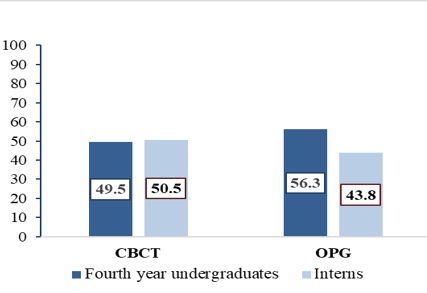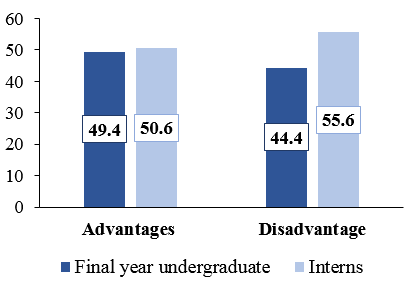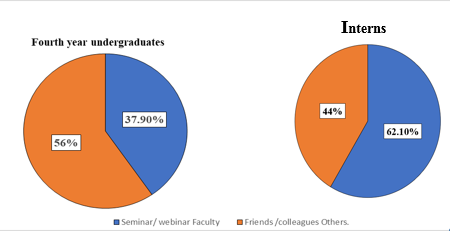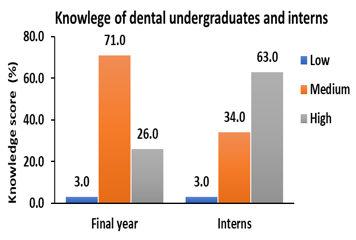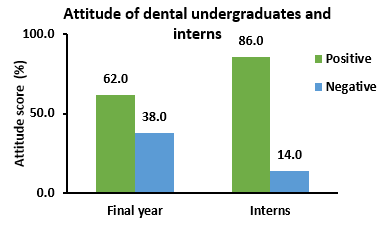Introduction
Radiographic images are an essential diagnostic tool for screening and management of diseases. Since many years, two dimensional projections were the foundations in the field of diagnosis. But they have limitations like magnification, distortion and superimposition which can lead to misrepresentation of structures CBCT offers various benefits over 2D radiography, such as absence of superimposition and geometric distortion, also producing 3D depiction of hard tissue with minimum soft tissue information. Another benefit of CBCT unit is of its suitability for use in dental offices compared to conventional CT scanners, due to its compact size that taking less space. In addition, radiation dose from CBCT is ten times lesser than that of standard CT scans for craniofacial radiodiagnosis. It also has an excellent dimensional accuracy and interactive display modes, that offers 3D maxillofacial imaging and multiplanar reformation.1, 2 CBCT images are acquired by focusing Cone-shaped X-ray beam on 2D detector which is attached to the gantry spinning 360 degrees or less around the patient's head to provide sequence of 2D images. The operator can extract flat and curved multiple reconstructions, which are then merged to produce precise three-dimensional images on software program with algorithms. 1, 3, 4 CBCT provides comprehensive images of the teeth, jaws, 5 nasal cavity, and orbits along with information of the surrounding vital structures such as nerves and anatomical components of the head and neck. 5 CBCT can be used to detect lesions involving jaws and teeth such as tumours, cysts, 5 to evaluate sinus pathologies. 6 CBCT provides detailed images of the alveolar bone used to measure the quantity and quality of bone for implant planning 7. CBCT is used for planning orthodontic treatment by providing detailed images of teeth and jaws and to evaluate the TMJ and surrounding structures for signs of disorders. 8 It is also used to evaluate the pathologies in relation to airways.9 However poor soft-tissue contrast, beam hardening and scatter from dental materials are drawbacks. 2 In this modern era, CBCT is widely used in dentistry to enhance radiographic and diagnostic information which will improve the clinical practice and quality of dental care. Dental under graduate students will be the next generation dental professionals. Therefore, it is important that they have adequate knowledge about this imaging modality. Hence this study was conducted with an aim to assess knowledge and attitude of dental fourth year undergraduates and interns about CBCT.
Materials and Methods
This study was a cross-sectional questionnaire-based study carried out among undergraduates (fourth-year dental undergraduates and interns) to evaluate the knowledge and attitude towards CBCT based on their year of education. The study sample size was determined at a power of 0.85 and an alpha error of 0.05, the sample size was calculated to be 100 students in each group in order to account for a 10% dropout rate. This study had a sample size of 200 dental students overall, with 100 students in each group, i.e., group A-100 fourth-year undergraduate students and group B-100 interns. Undergraduates and interns willing to participate were included in the study. After ethical clearance was obtained from the institutional research and ethics committee (EC/NEW/INST/2021/2435), the study was carried out adhering to the ethical standards established by the Helsinki Declaration 1964 (Finland). Questionnaire was designed after referring to the earlier literature. 10, 11, 12, 13 The questionnaire was pre-tested and validated by circulating it to a sample of dental students who were not part of the final research, and Cronbach’s alpha coefficient was used to verify internal consistency and score was calculated to be 0.83 which showed a good intra and inter examiner reliability. The questionnaire consisted of 20 closed-ended questions in printed form, which were given after taking informed consent from the dental students in two reputed institutions in Belagavi. Sufficient time was given to fill out the questionnaire. In addition to gathering demographic data, the questionnaire included 12 questions to gauge the respondent’s knowledge and 8 questions to test their attitude about application of CBCT. This research was conducted for duration three months, from February 2022 to April 2022.
Statistical analysis
The data obtained was subjected to statistical analysis for simplicity of data management. The collected data was coded, arranged and entered into a Microsoft Excel® sheet template. The computed data was then transferred into Statistical Package for the Social Sciences (SPSS) 21.0 for Windows. Armonk, NY, USA: IBM Corp for statistical analysis. The descriptive statistics were presented as mean and standard deviation for continuous variables (age) and as frequencies with percentages for categorical variables (gender).
Categorical data was analysed using chi-square test and Fisher's exact test to find out the association between the study variables about knowledge and attitude questions and results were stated in frequency and percentage. Mann-Whitney u test was applied to compare mean scores of knowledge and attitude, among two groups, i.e, final-year BDS students and interns. In addition, the correlation between the knowledge and attitude scores were evaluated using Spearman's rank correlation coefficient test. Following was the questionnaire used to collect the responses. Statistical significance was set at p ≤ 0.05.
Table 1
Results
The questionnaire circulated among 200 dental undergraduates yielded 100% response rate. All the participants completely answered the questionnaire. This study included 100 fourth year undergraduate students (group A) and 100 interns (group B). In group A, 78% of participants were females, 22% were males. In group B, 64% were female participants and 36% were males. No differences were found between the responses of male and female participants to any questions from both the institutions. (Table 2)
Table 2
The descriptive statistics were presented as mean ± standard deviation (SD) for continuous variables and as frequencies with percentages for categorical variables
|
Characteristics |
Final year n (%) |
Interns n (%) |
|
Mean Age ± SD (years) |
21.85 ± 0.88 |
22.82 ± 0.90 |
|
Gender |
||
|
Female |
78 (78%) |
64 (64%) |
|
Male |
22 (22%) |
36 (36%) |
|
Total |
100 (50%) |
100 (50%) |
Response assessing the knowledge about applications of CBCT
A chi-square test and a Fisher exact test were used to find out the association between the knowledge and attitude of the students and their responses to the questions. P < 0.05 was considered statistically significant. This study included 100 fourth-year undergrad students (Group A) and 100 interns (Group B). Overall, 49.2% of the participants in group A and 50.8% participants in group B were familiar with word CBCT. While only 47.9% of students in Group A and 40.0% in Group B had knowledge about CBCT being used in dentistry with no statistically significant differences (p>0.05). When participants knowledge was assessed about working principles of CBCT, 35.5% in Group A and 64.5% in Group B students knew about working principles with statistically significant difference (p>0.001). Furthermore 50.8% in Group A and 49.2% in group B students were aware that CBCT is more effective than OPG in detecting orofacial pathologies. 51.1% of Group A and 48.9% of Group B students, had knowledge of the use of CBCT in imaging TMJ disorders, where as 56.5% Group A and 43.5% Group B students knew that CBCT is used in cancer staging, with no statistically significant differences (p > 0.05) for the above response. 33.1% of Group A and 66.9% of Group B students were aware about application of CBCT in detecting relation of mandibular canal to the third molars with statistically significant difference (p<0.001). (Table 3 ) Where as 58.5% of Group A students and 41.5% of Group B students had knowledge of the utilization of CBCT for dental implants, evaluation of impacted teeth, examination of diseases of the jaw and Orthodontic evaluation. About 49.5% of students in Group A and 50.5% Group B had knowledge that CBCT is the radiographic technique to record tissues in three dimensions. (Figure 1). Both groups of students were aware of the advantages and disadvantages of CBCT, 49.4% students in Group A and 50.6% in Group B students had information about advantages of CBCT, where as 44.4%, and 55.6% in Groups A and B, respectively were aware of the disadvantages of CBCT. (Figure 2)
Table 3
Participants response about knowledge about CBCT
Assessing the participants attitude about CBCT and its implementation: Table 4
A total of 8 questions were posed for assessing the participants attitudes which revealed statistically insignificant differences (p>0.05). Participants in both the groups i.e Group A 48.0% and Group B 52.0% agreed that their institute provides adequate education about CBCT. 46.4% of group A and 53.6% group B agreed on recommending CBCT imaging to their patients in the future, while 45.5% of group A and 54.5% of group B students agreed that CBCT be used in a routine dental practice in near future. Where as 44.4% of Group A and 55.6% group B favored the necessity of CBCT availability in institution. (Table 4 ) 37.9% of Group A and 62.1% Group B students claimed to have learned about CBCT through seminars. 55.6% Group A and 44.2% group B students stated that they had not attended any CBCT-related workshops. (Figure 3) 32.6% Group A and 67.4% Group B were of the opinion that lectures on CBCT should be in the third clinical year of dental education. When asked about the willingness to update knowledge about CBCT, group A 45.6% and group B 54.4% agreed that they want to update knowledge about CBCT. (Figure 4)
The knowledge of the participants was categorized into low, medium and high based on the percentile obtained from knowledge and attitude scores. Low knowledge score was 3% amongst both Group A and Group B participants. where as high knowledge score was 26% among Group A and 63 % in Group B participants respectively. (Figure 5)
Attitude of the participants was categorized into positive and negative attitude towards CBCT. Majority of participants in Group B (86%) had positive attitude towards CBCT, whereas (38%) group A showed low positive attitude (Figure 6 )
Table 4
Assessing participants’ attitude towards CBCT
Mean Scores of knowledges, attitude of the participants
The mean knowledge scores with respect to year of qualification is shown in (Table 5). Maximum knowledge score for group A was 8.74±2.1 and for group B 9.70±1.80 respectively. Statistically significant differences were noted when knowledge scores were compared with qualification year (p < 0.001). The mean attitude scores for, group A was 3.77±1.24 and for group B was 4.98±1.43. statistically significant differences were noted when attitude scores were compared with qualification (p < 0.001)
Table 5
Comparison of knowledge and attitude score among the dental undergraduates and interns towards (CBCT)
|
|
n (mean ± SD) |
Statistics |
||
|
Final year BDS |
Interns |
Z |
p-value |
|
|
Knowledge score |
100 (8.74 ± 2.16) |
100 (9.70 ± 1.81) |
-4.784 |
<0.001** |
|
Attitude score |
100 (3.77 ± 1.24) |
100 (4.98 ± 1.43) |
-5.751 |
<0.001** |
Correlation between knowledge and attitude of participants toward CBCT
Spearman correlation coefficient test revealed that the knowledge of the participants correlated positively with respect to attitude (r = 0.42) with statistically significant differences (p < 0.001). Similarly, statistically significant differences were noted (p < 0.001) when knowledge of the participants were correlated with course year (r = 0.24). Also, attitude of the participants correlated positively with course year (r = 0.41) with statistically significant differences (p < 0.001). Table 6 shows correlations of the domains (knowledge, attitude) with respect to variables (qualification)
Discussion
We have the privilege of working and living in an era with unprecedented technological advance in diagnostic medicine. For a single diagnostic matter, several imaging techniques are available. A new age of diagnostic knowledge for pathologies of head and neck has emerged with the development of CBCT. This employs an extraoral imaging scanner created exclusively for maxillofacial imaging, which produces images with sub-millimetre and greater diagnostic quality in less than 60 seconds with exposure 68μSv.8 CBCT is widely used imaging modality by every dental specialty. 3, 14, 8 This survey was conducted for assessing knowledge and attitude of dental undergraduates and interns towards the use of CBCT.
This study revealed that (49.1%) of fourth-year undergraduates and (50.8%) interns were aware about this imaging modality. Findings ware similar to the studies that assessed knowledge on CBCT among students in various countries such as India, 12, 15 Sudan, 10 Saudi Arabia. 11 Similar study conducted by BalaBaskaran et.al among Dental professionals towards CBCT showed that 82% of participants were aware about CBCT which is inconsistent with the present study. The disparity in response in both the studies could be due to the difference in the knowledge amongst the dental practitioners and the students (fourth undergraduates and interns). 16
In the present study (35.5%) fourth undergraduates (64.5%) and interns were familiar with the working principle of CBCT. A study conducted by Sanger et al showed that, the interns were aware of working principals of CBCT which is consistent with the present study. 17
In this study, (50.8%) fourth year undergraduates and (49.2%) of interns felt that CBCT is effective than OPG in detecting orofacial pathologies. This was in accordance with the study. 17 Evaluation of substantial odontogenic and non-odontogenic cysts as well as benign jaw tumors may be facilitated by CBCT, may be used to help design the surgical approach by displaying the size of the lesion and its proximity to important structures, such as the maxillary sinus. 18, 19
Also (56.5%) fourth year undergraduates and (43.5%) of interns agreed that CBCT can be used for cancer staging. This was in accordance to study conducted by the Sanger et al 17 which showed that majority of respondents agreed that CBCT can be used for cancer staging which is also consistent, with the following studies. 16, 11 CBCT has poor soft tissue contrast due to increased image noise, the divergence of the x-ray beam and numerous inherent flat-panel detector-based artifact. When there is a suspicion of malignancy, CBCT should not be used since it offers very little information on soft tissues. 20, 14
Majority (52.0%) of fourth year under graduates and (52.0%) of interns reported that they had learned about CBCT from didactic lectures as a part of their course. Our findings were comparable to studies. 16, 10, 15
In this study it was observed that (45.6%) of fourth year undergraduates and (54.4%) of internes were willing to obtain any updated information on CBCT. A similar study conducted by Gunasekaran et al on dental postgraduates showed that 96% of participants were interested to learn about the CBCT, and this percentage is greater than the findings of the current study. 20 Since their study was conducted among postgraduate students and ours was conducted among fourth-year undergraduates and interns the discrepancy can be explained by the differences in professional career levels and, consequently, knowledge levels.
Furthermore (32.6%) of fourth year undergraduates and (67.4%) of interns emphasized the need of information of CBCT be included in their III year of dental curriculum, for gaining a deeper comprehension of CBCT, this finding is similar to the results of studies. 21, 16
According to the results of this study (45.6%) of fourth year undergraduates and (54.4%) of interns are particularly interested in learning about CBCT that might significantly revolutionize dentistry for their practice.
Conclusion
According to findings, of this study knowledge of dental students was moderate regarding CBCT and its application. Further enhancement in education about CBCT is required to address deficiencies. A combination of proper didactic teaching, clinical exposure, and skill development in utilizing CBCT can improve students’ perception and abilities. Undergraduate students can benefit from educational initiatives to increase their knowledge of CBCT as its uses can be expanded, improve dental health care practices in the future
Limitations
This study has certain shortcomings that could be addressed in future research. The present study was conducted in two dental institutions in Belagavi City, the sample size was not representative of all dental students. Closed-ended questions may have impeded recommendations or ideas for questions. As a result, a larger sample size with participants from diverse educational institutions could be used and including open-ended questions may assist participants in expressing their positive ideas

